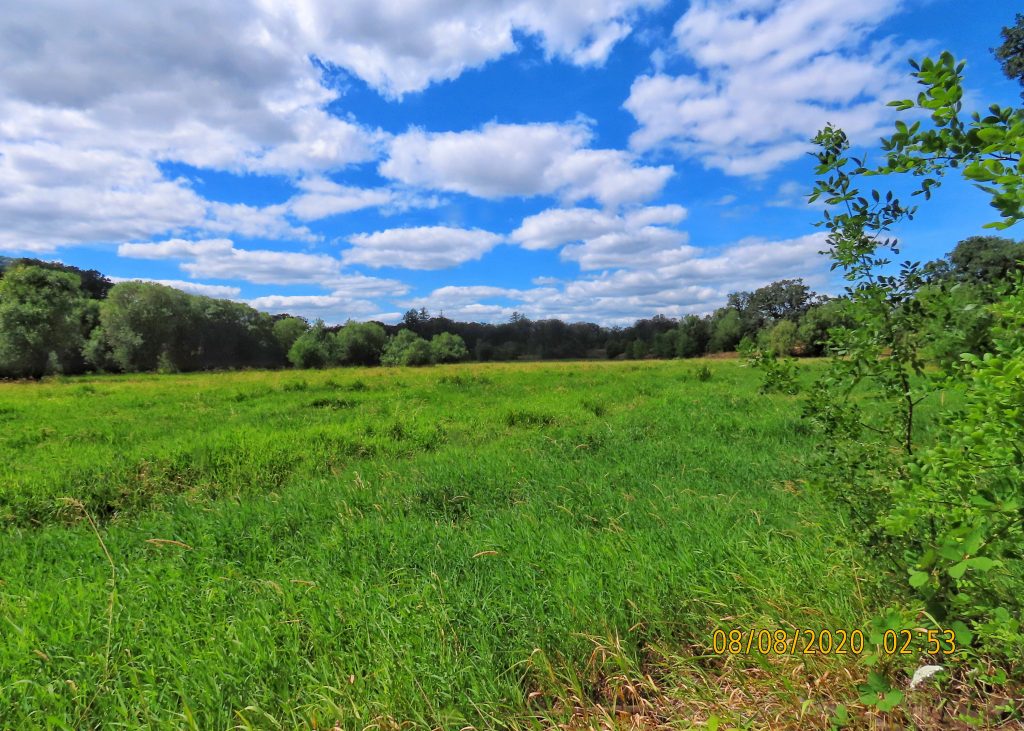
I chose the Ridgefield refuge as the subject of my first blog because that was where the seeds were first germinated that eventually produced this recreational naturalist. It was a little over 40 years ago that I went to work there as a member of the YACC (Young Adult Conservation Corps) and met my oldest and best friend Craig Sondergaard, who is the best general naturalist I know, with a library that would be the envy of many a community college biology department, and whom I hope to convince to write a monthly column on ecology for this site. Craig tried to teach me then, and I was a willing student, but due to partying a bit too heartily I lacked the focus, discipline, detail orientation, and mental acuity for the obsession to really bloom, although it did put down roots.
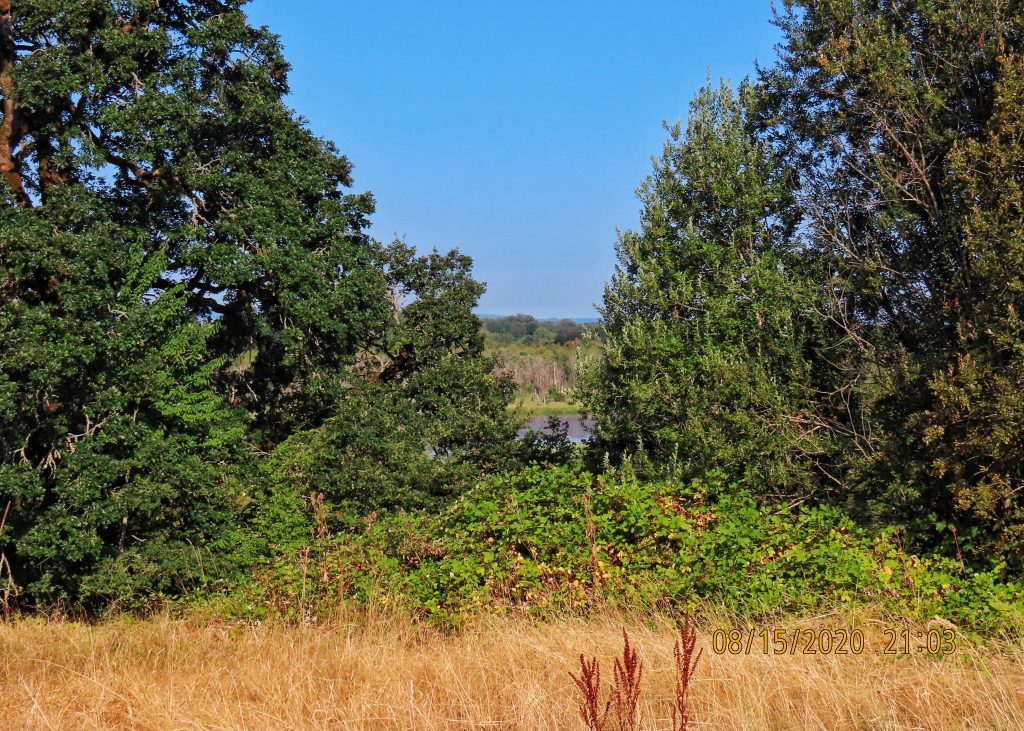
Not surprisingly there have been changes in the last 40 years here at the Carty Unit of the Ridgefield NWR. For one thing they have built a sturdy new steel and concrete footbridge over the railroad tracks, replacing the one which vibrated and swayed when trains rumbled underneath it, which swaying, especially when exacerbated by their prankster father, was dismaying to my children. One of them has more or less forgiven me for that.
On my left just after the bridge I pass by a grove of huge Oregon White Oaks (Quercus garryana), trees which were probably impressive already when Lewis and Clark met the Cathlapotle near here in 1805, and under whose indifferent limbs I wedded my second ex-wife.
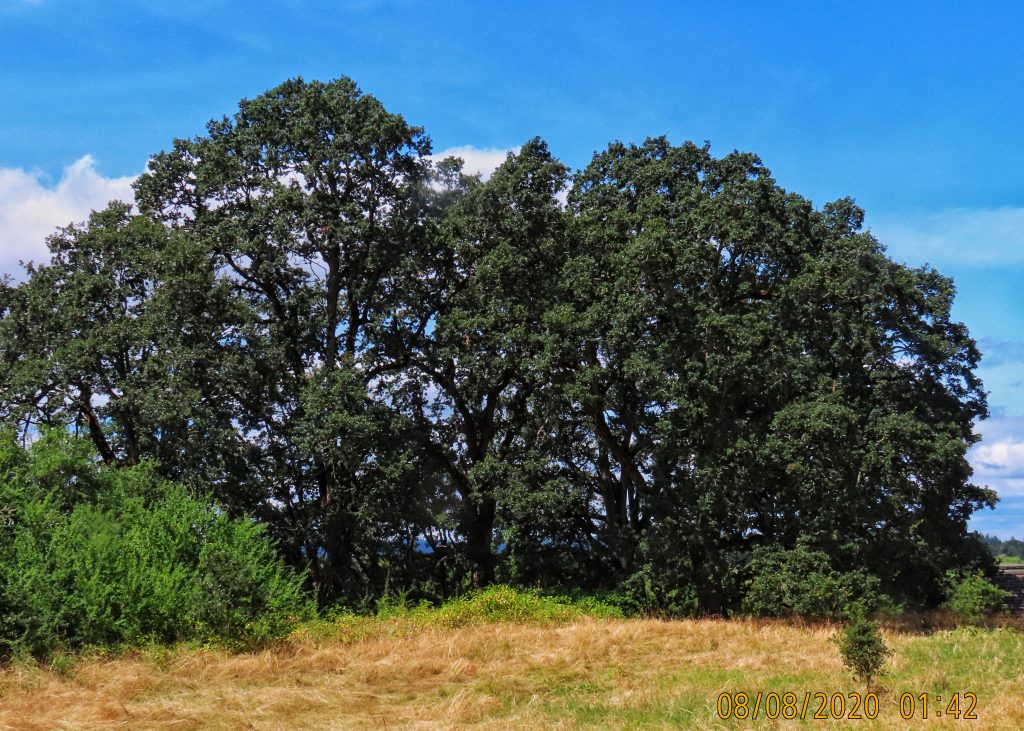
Speaking of the Cathlapotle, another big change on the Carty Unit is that they have built a reproduction of a Cathlapotle Plankhouse just north of those oak trees, which is open to the public and well stocked with appropriate informational signs.
From here the trail passes between a pond on your left which is ringed by the ubiquitous Phalaris arundinacea (Reed Canary Grass), and a woodland on your right. I saw the daisylike flowers of Anthemis cotula (Stinking Mayweed), and some stands of Solidago lepida (Western Goldenrod). But no ducks on the pond, nor much of any other birds. That wasn’t particularly surprising though, since it was the middle of the afternoon on an 84* day.
The right hand side of the trail is a bank of Symphoricarpos albus (Snowberry), winter desperation food for birds and good cover for small mammals, although I didn’t see any. Kind of the essence of good cover, I suppose. It is also the primary larval host of the Snowberry Checkerspot Butterfly, but I didn’t see any of them either. Then the first blooming Anaphilas margaritacea (Pearly Everlasting) I’ve seen this year, a sure sign we are in the dog days of summer.
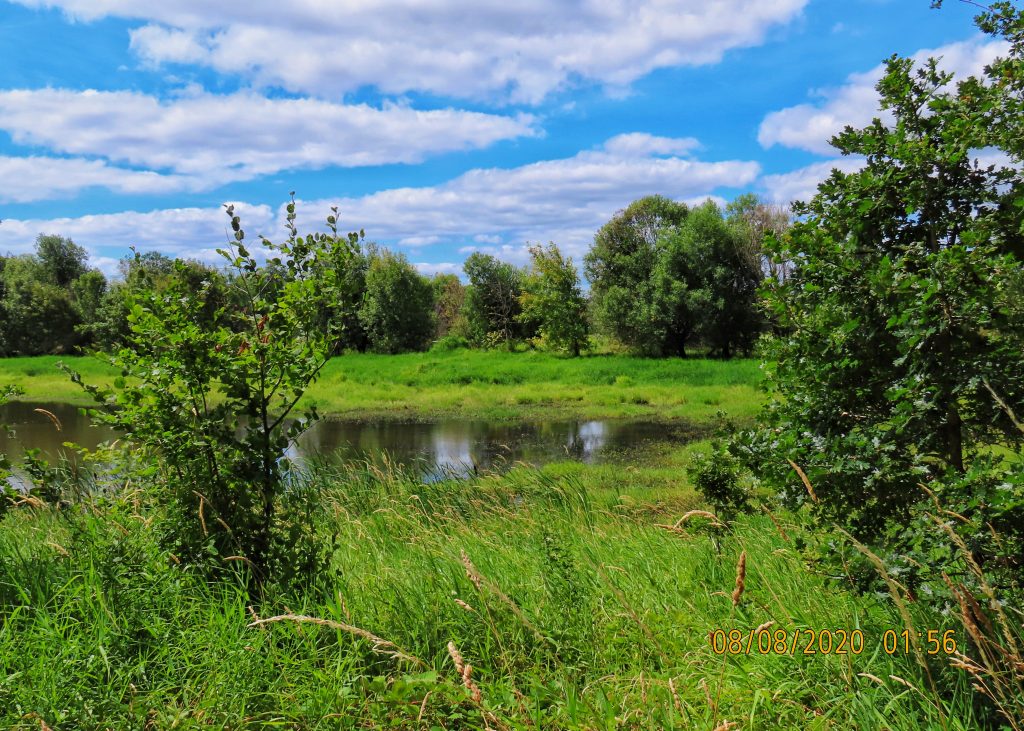
The biggest change from the point of view of a recreational naturalist is that, in an effort to restore habitat for the Oregon White Oaks, they have cut down many of the conifers, mostly Pseudotsuga menziesii (Douglas Firs), which surrounded the Oaks-to-Wetlands Trail. This process is known as an ‘oak release’, because the faster growing conifers have crowded and shaded the oaks, preventing their growth. No doubt this will pay great habitat dividends in years to come, but for now the area is just a clearcut dominated by stumps and non-native invasive species.
These situations where a familiar habitat has been denuded or destroyed are always shocking. But I’ve found that (unless it is a lost cause because the powers that be have decreed that that land should grow apartments or strip malls rather than forests and wildflowers) the quicker I can move through the grief to acceptance (a process made much easier in this case by knowing that eventually this would be be restored to some semblance of a native habitat) the sooner I can happily explore what is there now. Because there is always something finding a way to exist there now.
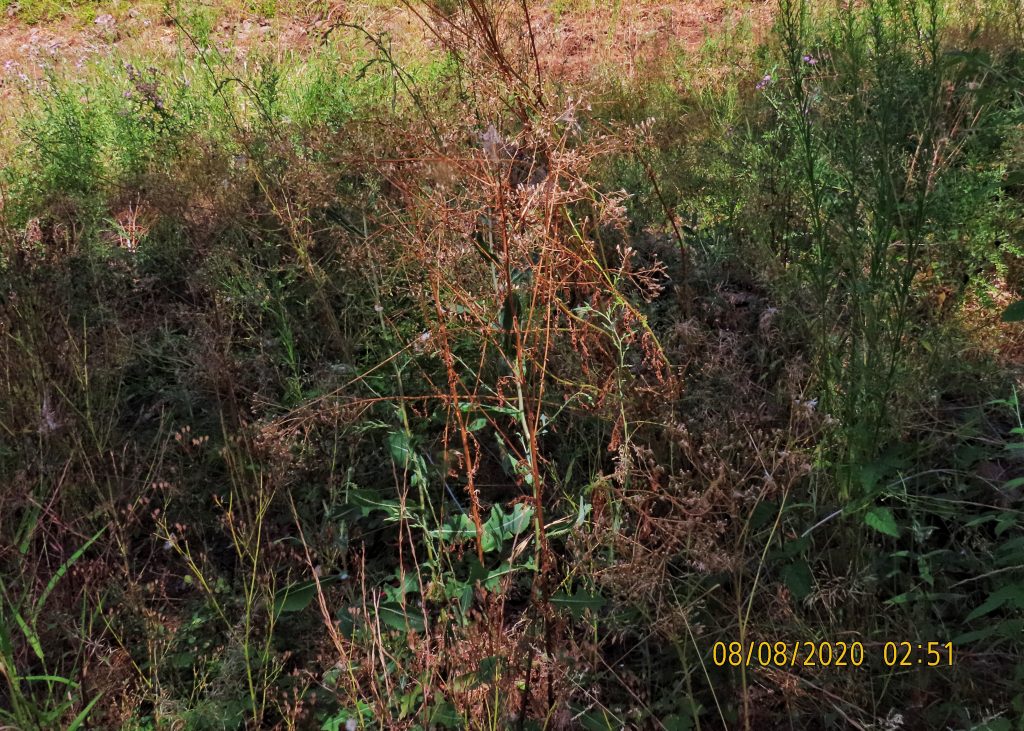
In this case there is Mycelis murals (Wall Lettuce), Lactuca serriola (Prickly Lettuce), Epilobium ciliatum (Fringed Willowherb), Jacobaea vulgaris (Tansy Ragwort), Cirsium vulgare (Bull Thistle), Cirsium arvense (Canada Thistle), Daucus carota (Queen Anne’s Lace), Lathyrus latifolius (Everlasting Pea), Rumex crispus (Curly Dock), Verbascum thapsus (Wooly Mullein), Rubus bifrons (Himalayan Blackberry), and Dipsacus fullonum (Fuller’s Teasel) amongst the vegetation, which is being visited by a Limenitis lorquini (Lorquin’s Admiral), several unidentified Pieris sp, Ochlodes sylvanoides (Woodland Skippers), Dissosteira carolina (Carolina Grasshoppers), Largus cinctus, and a female Libellula forensis (Eight-spotted Skimmer), plus various unidentified spiders, ants, wasps, bees and flies. Not to mention all of the little living creatures that I couldn’t see.
For most of my life I’d have looked at this artificial clearing and seen a wasteland. But once I started looking closely at places like this, differentiating the plants, learning some names and a bit of natural history, seeing all of the birds and bugs feeding, breeding, and hunting there, it started to come alive for me, gaining validity as a habitat.
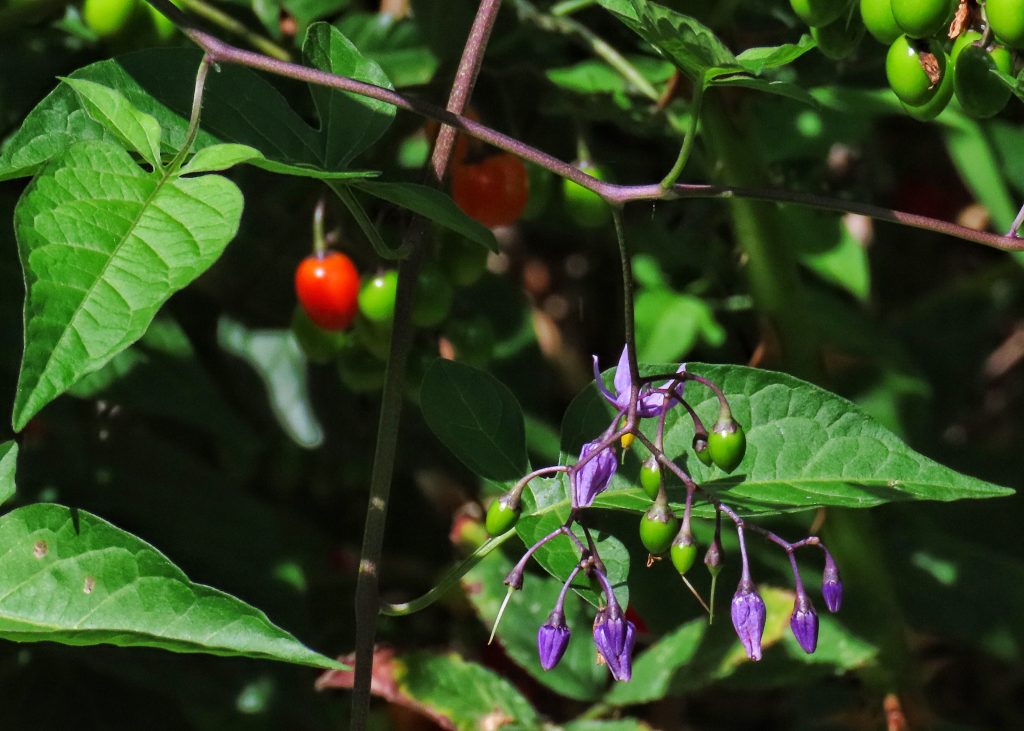
I cross a little footbridge over a tiny watercourse which is choked by the foliage and pretty blossoms of the highly invasive Impatiens capensis (Cape Jewelweed) and Solanum dulcamara (Bitter Nightshade).
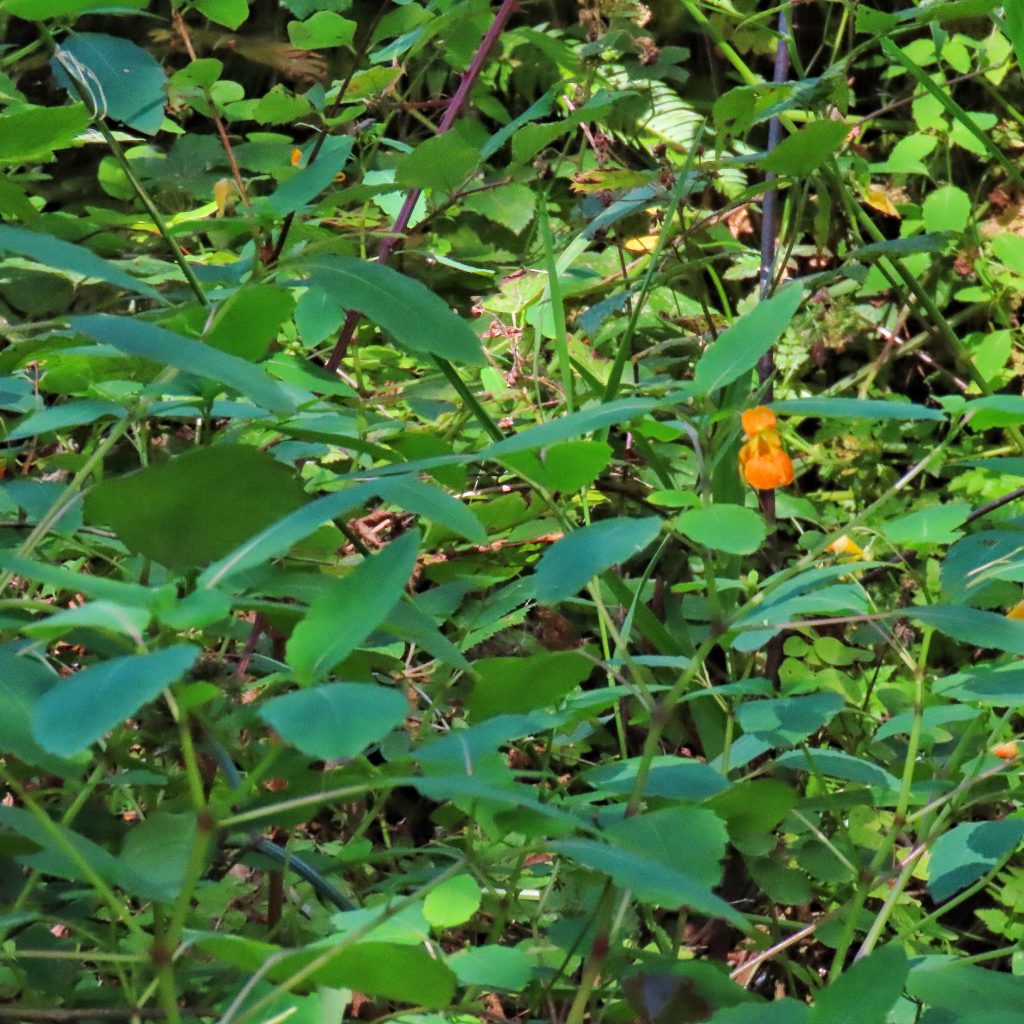
Near a copse of young oaks I saw a few Robins, and then a slightly larger bird pecking at the ground, which proved to be a Northern Flicker (Colaptes auratus) as it flashed its white rump escaping into the trees. Then a couple of Bombycilla cedar-rum (Cedar Waxwings) flew into a nearby tree, bouncing from limb to limb, their reddish brown crest silhouetted against the pale sky and backlit leaves, with occasional glimpses of their black mask and yellow tail feather tips.
I love Cedar Waxwings! They are a very animated bird, which makes for difficult photo ops, but they appear to be having fun in a way that is unusual for birds. I’m probably committing the sin of anthropomorphizing here, but they seem to glory in flying pell mell into perches that won’t support their weight and riding them down, like the trees were just random jungle gyms.
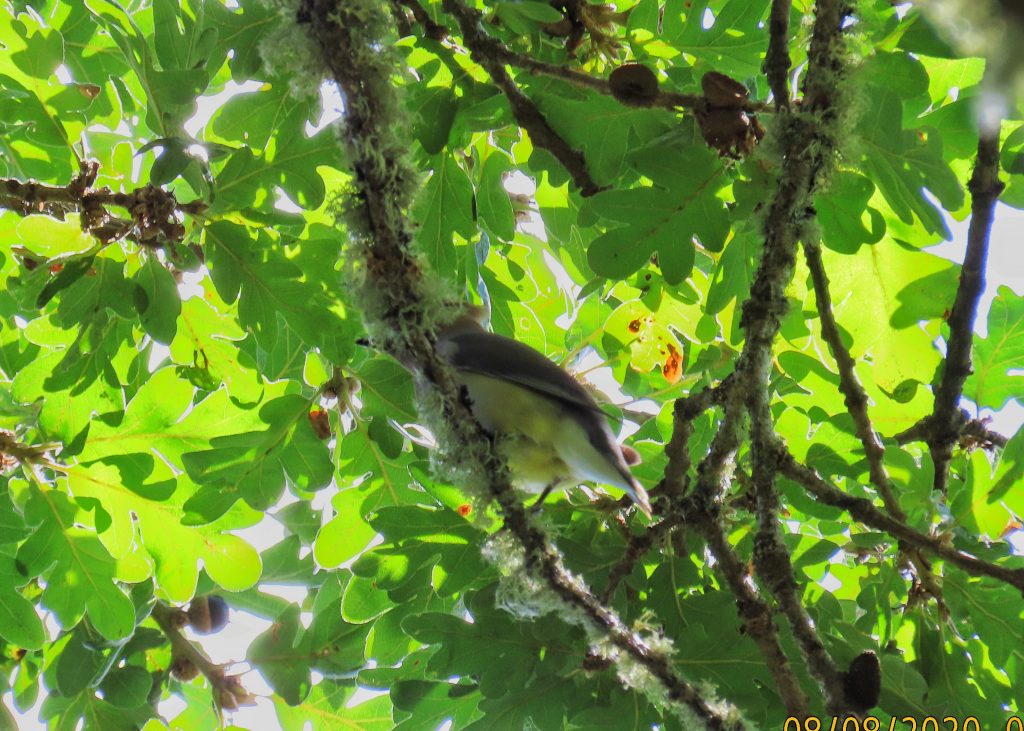
As I was rejoining the main trail from which this loop had sprung, much shorter now during the restoration and encompassing far less diversity of habitat than in the ‘old days’ when I worked here or wandered it with my kids, I spoke with a couple who told me that they had spotted an adult and a juvenile Bald Eagle (Haliaeetus leucocephalus) feeding on the carcass of a carp down by the bridge over Gee Creek. So I drifted that way. I missed the feeding and the adult, but with the help of a fellow photographer I finally spotted the mottled form of the juvenile amidst the mottled shadows in the crown of a huge old oak tree. I watched it for awhile, grateful for the recovery of this species, whose population had dwindled to the point that when I worked here in 1980 a Bald Eagle sighting was big news, snapped a few photos and, content, walked back to my van.
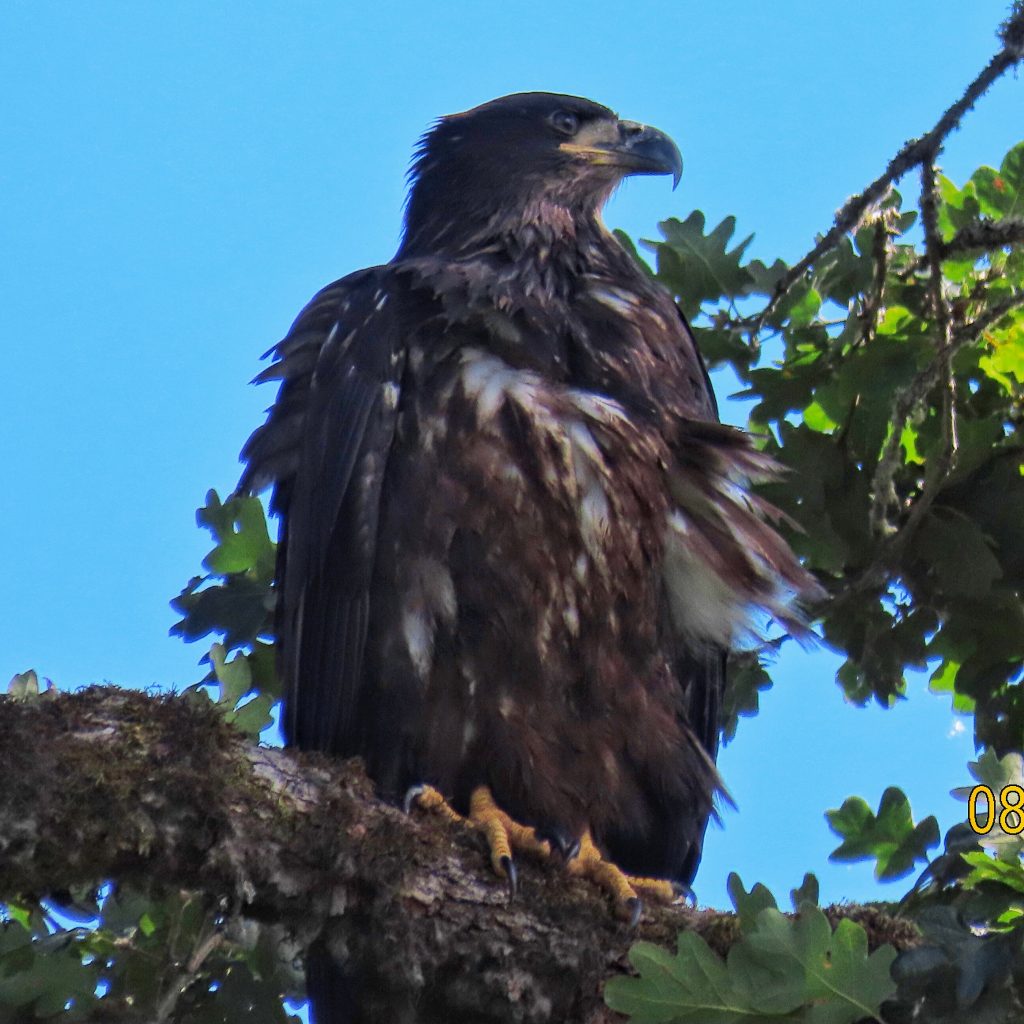
Nicely written. How wonderful that you are sharing your loved knowledge here. I don’t think I even knew that the jewelweed was an invasive.
Have you ever seen drunken Cedar waxwings? Late fall when they feed on old berries that have fermented. It’s quiet a sight.
Thanks for sharing!
Thank you, Rain! Yes, I have seen inebriated waxwings, though not nearly as often as I’d like to😀
Hi Dan, is this blog new or am I just seeing? I am mostly a herp guy but expanding my horizons. Taking two online classes now: botany and entomology. Don’t quite know how to follow your blog, but will give it a try.
Yes, it’s brand new. I just went public last night. I hope you enjoy it!
I’ll watch FB for news about how to follow 10,000 Things in the PNW. Eagerly.
Thanks Sharon! Fairly soon there should be a free subscription option.
I’ll be posting links on Facebook as I add to it. And I hope to be able to set it up so people can subscribe and receive notifications. But I have to talk to my tech gal about that.
this is wonderful! I have drawn and painted many of the same treasures you saw! Can I get this through my email, or just FB?
Thanks Jude! I will be setting up a free subscription option where every post will automatically be sent to you. But I need tech support for that, and my tech gal is busy today. What group did you find this through? I will be sure to post there until I get the subscription thing worked out.
I always enjoy our trips to the refuge!
You are a great partner!
I have lived her my entire life and I have never hiked in Ridgefield. I always wanted to, just never got the chance too. Your pictures are great, I especially love the one of the bird you took.